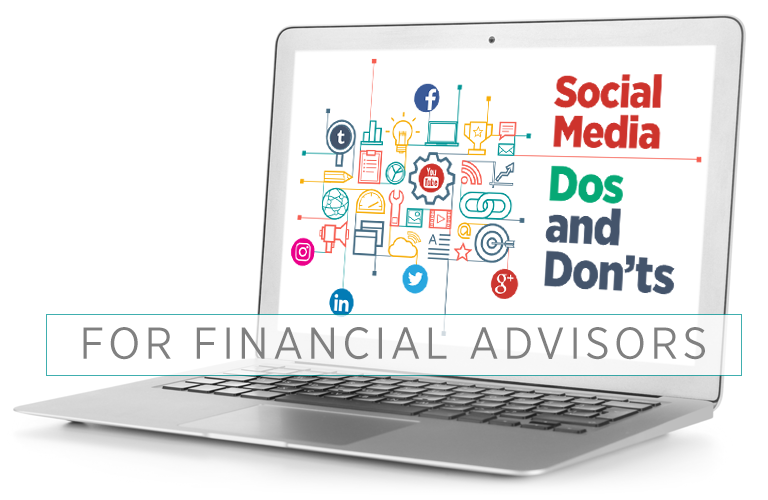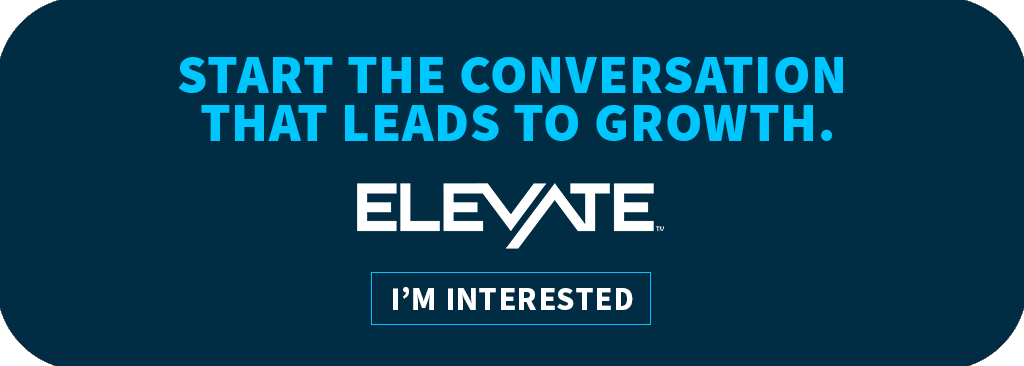Updated September 6, 2023, at 4:08 PM
Social media and financial professionals aren’t always a match made in heaven.
And that’s okay.
If you put me in front of clients, in charge of their hard-earned money; I’d fold like a house of cards.
But, I do know quite a bit about social media and its best practices.
So, to clear some air around this topic, I did some good ol’ fashioned brainstorming to come up with ten social media “to-dos” and ten “to-don’ts” that can help you improve your social media performance across the board. Alright, enough gobbledygook, let’s get to the point.
Financial Advisor Social Media Tips
DO:
1. Be Consistent
One of the questions we always get from advisors is, “How often should I be posting on social media?” And the answer is….it depends.
For most advisor’s businesses, anywhere from three to ten posts per week should suffice. You’re no multi-national corporation, so there’s no real need to break your back over posting multiple times every single day. The main point here is to be consistent with your posting.
You don’t want to go weeks without a post, then bombard people with two posts a day for a week, and then go back to posting nothing for two months. That’s not a formula to form strong customer relationships.
2. Showcase Your Personality
Ever met a drab person, with little personality and said “Gee, that’s the type of person I want to befriend!” Yeah, me either. The beauty of social media is its fluidness, and the ability to shed light on your business and your personality, without being so calculated in your efforts.
So, use social media genuinely. Humanize yourself and your brand. After all, people still love to connect with people. Be sure to act in your company’s best interest, but have fun with it. Remember: no one likes boring.
3. Give More, Take Less
Like any other relationship, those successful at connecting with people on social media practice a “give and take” method. Social media should be used to help your customers more than it helps you. That’s where the value is added for your clients and prospects. They want to be able to learn, interact, and be helped by your posts – not get annoyed.
For posting content, there’s an easy-to-follow 4/5 rule: For every five posts, four should contain content that’s relevant and helpful to your audience, while one can be an advertisement for your business, a product promotion, or any other piece of information related to your business. So, stay away from using social media as a soapbox for how great your business is, and add some value to the lives of your audience.
4. Be Original
For a financial advisor’s social media channels to be successful, they must also be unique. Show that you’re different from your competition through your posts. Illustrate that you’re thinking outside the box to make your competition look bland and cookie-cutter. It makes a bigger difference than you may think.
5. Optimize Your Profile and Bio
On Facebook alone, a business page profile has areas to fill in your company’s story, your business and contact information, products, milestones, and much more. Be sure to use these. Fill in all the relevant information you can to fully optimize your social pages. After all, how’s anyone supposed to connect with your business if they barely know anything about it?
6. Maintain One Voice and Tone
Remember the importance of consistency in posting? Turns out, consistency in your social posts’ voice and tone is important, too. This means that you should develop a certain tone and voice throughout all your social posts that reflect your company well.
If one posts read, “R U ready to annuitize urself?!?”, and another, “With annuities, you can wave goodbye to the stress that comes with retirement planning.”, then your social voice needs some work.
A simple exercise is to think of two to three adjectives that describe your business, and then create your voice around that. So, if your business is seen as “friendly”, “helpful”, and “professional”, then make your posts’ voice and tone come off as such.
7. Be Visually Appealing
Humans are visual creatures. In our industry of numbers and words, it can really help to create or find visuals to make a point. Not to mention, photos and videos get much better engagement across all social platforms. Don’t believe it?
- Tweets with images receive 150% more retweets
- 4X as many consumers would rather watch a video than read
- Infographics are liked and shared 3X more than any other type of content
If you’re still not convinced, a quick Google search will show you hundreds of more reasons to use visuals in your social posting.
8. Be Aware of Time
It’s important to know when your audience is online. Use some general guidelines for ideal post times, but don’t forget to experiment with different post times yourself. Choose periods throughout the day for posts, then go back and measure and analyze which time frames seem to get the highest engagement rates. Going forward, center your posts around the hottest times for your page.
For example, our audience interacts best at 3:00 pm on Thursdays and Tuesdays; so, we usually send new or important information out around those times.
9. Use the Right Content on the Right Platform
Every network is different, so your messaging should be, too. For example, be short and concise on Twitter. Sure, the character limit has increased for tweets, but that doesn’t mean you should use all 240 characters. On LinkedIn, spin your content with a more professional tone. And on Facebook, create content around starting a casual conversation.
10. Know Your Customers
Tailor your content around your customers’ wants and needs, not your own. Your audience wants to know what you can do for them, not what you want to talk about. If you know that a huge majority of your audience has already seen that one-pager you wrote about annuities, you probably can find some better content on a different topic to be posting that’ll actually help them.
DON’T:
1. Use Every Social Network
At this point, it’d take ten minutes to name every social media platform there is today. Think about who your audience is, where they are online, and how their use of the platform can benefit you. For almost every advisor, the three recommended platforms are Facebook, LinkedIn, and Twitter.
2. Talk About Hot-Button Issues
In the bizarre age of a raging culture war, full-on triggering and hardcore trolling, for some reason it seems like businesses have decided to take stands on hot-button issues.
Our advice? Don’t forget what your role is as a business. Instead of pushing agendas, push out useful information, your own business, your products, and your people. There’s little to be gained by potentially upsetting half of your audience.
3. Delete Negative Comments
This is a big no-no. An issue can become much bigger if you try to hide or delete comments. Instead, acknowledge the issue and respond that you’re proactively taking steps to resolve any issues. You have a much better chance at mending relations and fixing the problem than you would by deleting comments.
4. Ignore Comments and Interactions
This just in: social media is meant to be social! And for a business, it’s vital to engage with your audience. Ignoring comments and interactions across your social channels just equates to a sense that you don’t care about your customers (a.k.a. horrible customer service).
5. Like Your Own Posts
Well, yeah, of course you like your own post…you wrote it! But, physically clicking “like” is a bit overboard, and honestly, a little odd. Let your audience do the “liking” – and be sure to encourage your employees to be social advocates for you through their personal profiles!
6. Automate Too Much
Automation tools are awesome. They can be super helpful. But, If you rely on social media automation tools too much (i.e. Hootsuite, Sprout, Buffer, etc.) to do your posting and to find content, you’ll lose that ever-so-dreamy human touch we’ve talked about. Remember, your brand messaging is important—so be sure to inject your own personality.
7. Point Fingers
In case you haven’t personally been in, or seen one unfold in real time, Internet fights are…unproductive (to say the least). This especially applies to businesses. There’s no value in picking sides, pointing fingers, or any other nonsense for your business. It’s a lose-lose situation, so just stay away from virtual fighting.
8. Forget About Privacy
You may not think you’d ever be a target of a hacker until you are. If we’ve learned anything about cybersecurity in recent years, it’s that it needs to be taken very seriously. Take extra precautions to regularly change your password and be sure to fiddle in the privacy settings of each social platform to each setting is set to your liking. Just don’t be so restrictive that people can’t find you online!
9. Connect with Everyone
I know, I know. I told you to be social on social media. But, there’s an exemption when it comes to connecting with others. Just because someone follows you, doesn’t mean you have to follow them. Be mindful of who you’re surrounding yourself with online, and who you invite to like your page. You want your followers and the interactions they create to be meaningful and productive for your company.
10. Be Spammy
Ever had a crazy cousin that posts constantly? Or had to block or unfollow someone because your feed is littered with their posts? Just like with emails, no one likes being spammed on social – so just don’t do it. If you’re being too repetitive (or are posting seven times a day), people will grow tired and simply remove your business from their news feed. That’s a big “no bueno”.
There they are, the ten dos and ten don’ts of social media for financial advisors. Now, go gain those followers, nurture those relationships, gain those leads, and close those deals!


